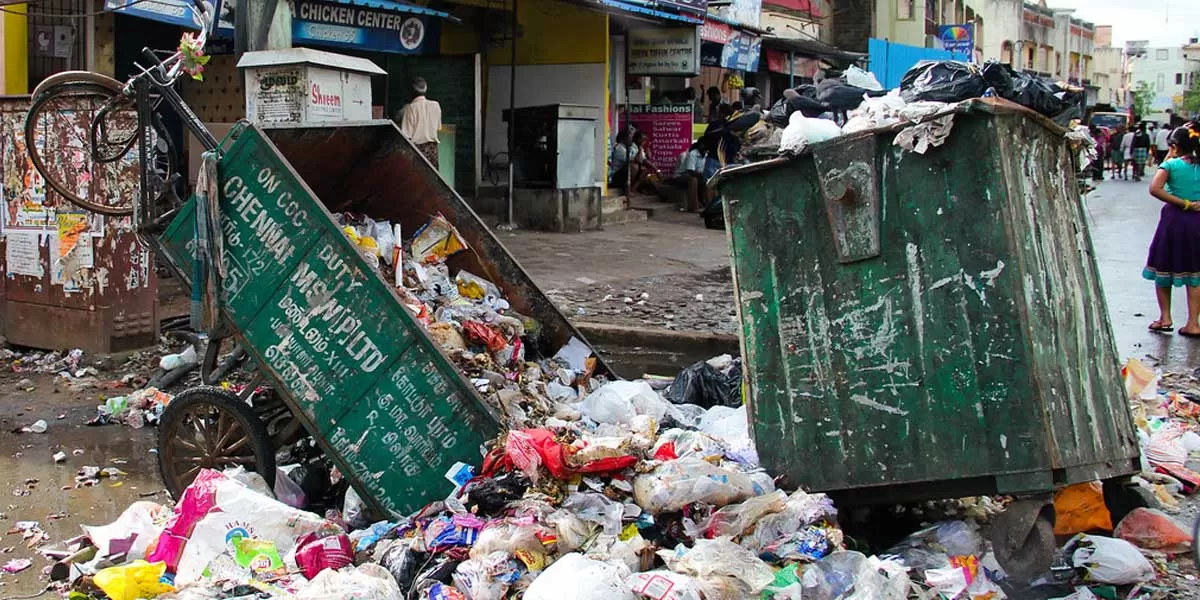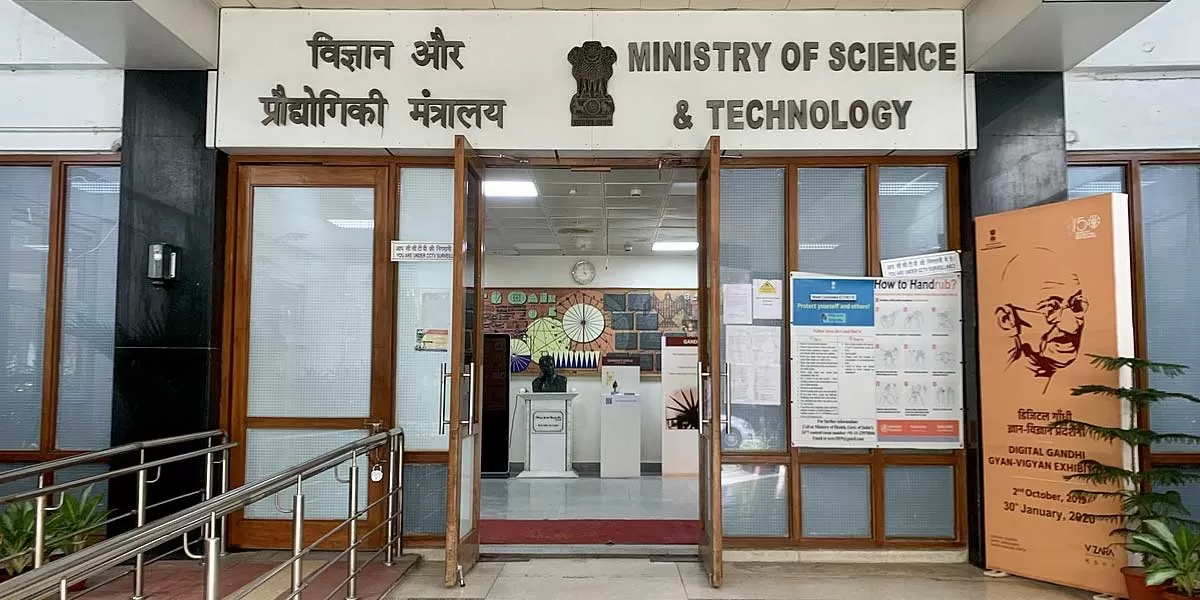CW looks back at 2022 – the year that was – and at what lies ahead for the construction sector in 2023.
The Year 2023 for Real
For some, the year 2022 so far has been a phenomenal year for the real estate sector, particularly the residential real estate. On the other end, some industry experts consider the year 2022 a push-ahead year, wherein the market moved further ahead from the distress seen in 2020 and the revival seen in 2021.
“Interestingly,” Vivek Rathi, Director Research, Knight Frank India, shares, “both housing and commercial segments performed well on sales volume and price fronts. In case of housing, sales in the mid and higher ticket size segments outperformed other segments. Further, suburban, and peripheral locations witnessed increased homebuyer interest on the premise of hybrid work culture. In case of office segment, flexibility in lease arrangements became a key feature and benefitted the co-working segment by a significant measure.” He adds that on the industrial and warehousing front, there has been increased space demand momentum as the China plus one strategy added to the production linked investment (PLI) scheme tailwinds, which benefitted the warehouse sector. “In terms of the headwinds, home loan interest rate increase did impact affordability of home buyers. Whereas in case of capital flows into the Indian real estate sector, global linkage of investors translated into moderation in investment flows.”
Going by the current momentum in housing sales and that of the first three quarters this year, Anuj Puri, Chairman, ANAROCK Group, says, “The year 2022 will likely breach the previous peak of 2014 with all-time high sales across the top seven cities. Latest ANAROCK data projects total sales in the top seven cities to exceed 360,000 units in 2022. In the previous peak year of 2014, the top seven cities saw 343,000 units sold.” He adds, “The January-September period of 2022 saw housing sales and new launches surpass the full-year readings of 2019 with approx. 273,000 units sold in nine months in 2022 and new launches at 265,000 units. The year 2019 saw over 261,000 units sold in the entire year, while new supply stood at 234,000 units.” Besides residential, commercial real estate is also gaining momentum with employees returning to offices.
Citing his expectations in the year 2023 and upcoming opportunities, Puri says, “The current sales momentum in the housing sector is likely to continue in the first quarter as well while new launches may remain under control. In 2022 so far, we have seen a hike of almost 190 bps in the repo rates by the RBI which inevitably has increased interest rates. While so far, the impact of the rate hikes has been minimal but if the rates rise further, it may go on to impact sales. ANAROCK’s most recent Consumer Sentiment Survey also found that housing sales would be considerably hit if home loan interest rates breach the 9.5 per cent mark. Further, the commercial sector will also gain traction as work-from-office has become more prevalent now.”
As a sneak peek into the new year, Rathi says, “As far as the domestic demand is concerned, we think it is ring-fenced on account of resilient Indian economic growth and long runway for sales growth in sectors like housing and warehousing. We expect these segments to be relatively unscathed by the upheavals expected in the developed economies of the USA and Europe. Some segments like office and capital flows will be influenced by the economic conditions in the developed markets given the interlinkage of client segments. As we move ahead from the cycle on monetary tightening and price stability targets of central banks, we expect Indian real estate to capture increased investment and business given the premise of availability of high skilled talent, business friendly government policies, and improvement in global competitiveness index.”
Sharing his expectations on which segments would take off, Rathi says, “Expect the housing and warehousing sector to further their growth scale, as underlying factors on desire and purchase ability of respective consumer groups remain strong. Further, the warehousing sector is expected to enjoy the structural tailwinds of both formalisation of warehousing spaces and inorganic demand coming from the movement of captive storage spaces with producers to high quality multi-tenanted spaces.”
“The major risks for the residential sector include high inflation and the interest rates hike. As long as these are under check, the demand will continue to remain strong. As for the commercial sector, recession, if any (as anticipated in US), could play a dampener especially if it permeates down to India as there could be layoffs,” concludes Puri.
Affordable developments
Affordable housing has become a wider segment, and with time, it has been further segmented and would be planned and perceived differently in a Metro city vs a Tier-II city. Evidently, there has been a massive demand in this segment, and the Central Government has been supporting the segment through its Credit Linked Subsidy Scheme and PM Awas Yojana.
Vimalendra Singh, Chief Sales & Service Officer, Mahindra Lifespaces, says, “Private players have come in to fill the demand and supply gap.” However, he highlights the challenges faced in the economics of affordable housing: “The cost of construction has gone up and the sales value of affordable housing is lower.” As we move into the new year, he hopes, “some of these inflationary pressures come down and stabilise so that there is predictability in the segment.” As a developer, Mahindra Lifespaces is also exploring technologies in construction and sales to bring down cost, thereby making it affordable. Sharing his expectations from the sector in the year 2023, Singh says, “We have a strong affordable segment that we call the ‘Value Housing’ segment, and this will continue with our ongoing projects in Chennai, Mumbai and Pune. The last year has been good to us and to the sector as a whole. The demand is robust.”
Fuelling the aviation sector
Speaking of the aviation sector, India has laid plans way beyond 2023. With airports witnessing a huge expansion in the past eight years, the government now is focusing on adding 80 more airports in the next four to five years, which will take the total number of airports in the country to 220. What’s more, an in-principal approval for establishing 21 greenfield airports has been granted.
Greenfield Airports Granted In-principal Approval
Mopa (Goa)
Navi Mumbai, Shirdi, and Sindhudurg in Maharashtra
Kalaburagi, Vijayapura, Hassan, and Shivamogga in Karnataka
Dabra in Madhya Pradesh
Kushinagar and Noida (Jewar) in Uttar Pradesh
Dholera and Hirasar (Rajkot) in Gujarat
Karaikal in Puducherry
Dagadarthi (Nellore), Bhogapuram and Orvakal (Kurnool) in Andhra Pradesh
Durgapur in West Bengal
Pakyong in Sikkim
Kannur in Kerala
Hollongi (Itanagar) in Arunachal Pradesh
Even more, the Regional Connectivity Scheme-UDAN (Uday Desh ka Aam Nagrik) for this fiscal year, has targeted to develop 35 airports, helipads and water aerodromes.
Sharing his perspective on the aviation market, Hari Marar, Managing Director and CEO, Bangalore International Airport (BIAL), shares, “The aviation market has witnessed a robust demand in the last six months, and this has impacted the passenger volumes at BLR Airport positively. Air travel had taken a significant hit due to the pandemic, but it is recovering now, and we have observed growth in recent months. We are optimistic that this upward trend will continue over the next few quarters. BLR Airport is reporting good numbers due to its connectivity and being a preferred transfer hub.” Adding on the launch of the Bengaluru Terminal 2 (T2), he shares, “With the launch of T2, we have expanded our capacity to cater to additional 25 million passengers every year – this is apart from the 35 million passengers per year capacity in Terminal 1. What makes T2 more special is not just its scale and size, but also the fact that it’s inspired by Bengaluru city. Built as a terminal in a garden, T2 reflects all that Bengaluru stands for – a green, modern, innovative, sustainable, and culturally rich city. Over the last 14 years, BLR Airport has evolved as the Gateway to South India and with this next phase of expansion, the aim is to position the airport as the new Gateway to India.”
Certainly, an example from recent times that other upcoming projects in this segment would want to draw inspiration form.
Long route for roads
The path to the smooth drive in India is achieved at the Central, state and city levels.
Speaking of National Highways Authority of India’s (NHAI) achievements this year, the authority has created world records in the construction of bituminous roads and rigid pavement. RK Pandey, Member-Projects, NHAI, shares, “We have maintained the uptrend, be it construction, monitoring, or awarding contracts. NHAI has awarded 5,960 km this year, up from 4,898 km in 2021, and constructed 4,332 km, which is up from 4,241 km in 2021. And in the year 2023, we hope to keep up with this pace.” Pandey continues that NHAI is focusing on encouraging pre-construction activities and this is reflected in the number of cases that we have given within the appointed dates. “Last year, within the appointed dates, we had given 1,223 km. Till date, we have given the appointed date in 3,372 cases. So, we are going to surpass whatever we did last year.” Pandey also emphasises on asset monetisation as an important aspect. “In TOT and InvITs, we have done a lot of work and both have been successful last year. This year, we have set a bigger target.” Conciliation is also crucial. Last year, NHAI settled around 61 disputes. And with 20 cases already settled this year, another 70 cases are in different stages of settlements.
At the contractor end, Ashoka Buildcon has been building sustainable roads, and the company enjoys an equal mix of central and state and ULB level projects. Satish Parakh, Managing Director, Ashoka Buildcon, and President, International Road Federation India, shares his views on the sector performance. “We have been a little slow in targets and awards in 2022. But going forward, we see a great pick up in Q3 and Q4. Undoubtedly, 2023-24 is going to be a year of infrastructure, especially for the highways and railways.” However, he adds that while Central Government projects are running well; state government and local urban bodies projects are facing cashflow issues. For instance, he says, “For MSME, there is an MSME Act, which ensures that any MSME medium and small-scale entrepreneur gets his payment in 45 days. But in the case of payments for road contractors, there are no regulations for when the payment is delayed or it goes into dispute. There is a need to revive this ecosystem. In the last five years, 600 companies have been wiped off and 9 per cent of them just because of cash flow.” As the President of International Road Federation India, Parakh concludes, being an international federation, we cannot make a country-specific agenda. But as a company and as an NHBF member, we raise our voices. Internationally, payments are absolutely disciplined and guaranteed. In India, NHAI maintains discipline in payments; the state governments should also follow this discipline.
With a focus on sustainability and safety, Parakh adds, “A lot of CO2 emissions are generated from the construction materials like quarrying and mining. And, we are trying to market a technology where recycling, reusing and replacement can be done with sustainable materials instead of natural materials. We are trying to align this with the global goal to reduce carbon emissions. Despite the costs, the emission of CO2 going down while developing is crucial.” He points the second major aspect in India, “the road sector is the most unsafe in the world – 150,000 deaths every year and 450,000 injuries on the highways. Our target is to reduce this by 50 per cent and bring in technology, awareness, education, and enforcement. We are developing an app where our drivers can be rated, their behaviour can be monitored, and their learning skills can be improved. This rating can be used for reducing accidents, and also to bring down their insurance premiums. It is in discussions with insurance companies, regulatory authorities and with the ministry to make this a reality.”
Is the new year on track for Metro-rail and Railways?
There have been baby steps towards new kinds of projects, says Sunil Shrivastava, Managing Director, BARSYL. “We have been able to break the mould; the government has been able to get in some new thinking, ideas, and concepts. The ministers, both in the metro-rail as well as the railways, have been able to look at things differently and bring about a change. Definitely, it has been successful and we have made a good beginning.” He points out to the Gati Shakti plan as a breakthrough. “Important projects will get monitored at a single location and bulk of that investment is coming in from the railway sector.” There have been mega announcements on the railway front. Railway station development is a big opportunity. With four stations announced now, 40-45 stations have been identified in stages, which will be announced in the new year. He adds, “For the smaller players as well, there are projects worth Rs 2-3 billion each.” Specific to the metro sector, Shrivastava adds, “Quite a lot of the metros will be commissioned now, and the big invisible opportunity will come in from the O&M sector. The other opportunity will be asset condition monitoring, and this will pick up gradually. Older metros are reaching 10-12 years, which means they need maintenance now. Some of them would like to use current technologies like AI to monitor their asset.”
Speaking on where the opportunity lies for Alstom India; Olivier Loison, Managing Director, says, “With India prioritising more efficient and sustainable mobility solutions, the future of its rail-based networks will require modern digital technologies, electrification, and automation to drive greater freight volume and enhance passenger experience. While the government has earmarked funds for development of infrastructure, the quantum of the ask means that it will require strong PPPs to achieve this vision. Recognising this fact, the government is looking to invite greater private sector participation for the development of urban transport systems, mainline railways, and modern rolling stock for these networks. This represents a tremendous opportunity for Alstom to deepen its long-standing engagement with India.” He adds, “We are looking forward to bringing our world-class technology and help deliver it for Indian needs from our various production facilities spread across the country. In addition, we are looking forward to partnering with the Indian Railways and help upgrade the skills of its staff as they embark on producing and running the next generation of passenger trainsets and freight locomotives. Alstom is committed to the ‘Aatmanirbhar Bharat’ initiative and help strengthen the country’s railway ecosystem.”
All suited and booted, the cities are smartening up!
For the smart cities, the year 2022 has largely been a year of completion. The Smart Cities Mission is in its seventh year and the target had been for all the projects undertaken in the Mission to be recorded by March 2022. Vikash Chandra, Team Leader, Smart Cities Mission MOHUA, shares, “Largely, work has commenced across all projects of the Smart Cities Mission. The surge in the completion of the projects has been the highlight of this year – around 4,500 projects worth around Rs 910 billion have been completed. And as of date, projects worth Rs 900 billion are at various levels of execution.” With the nature and focus of the mission, there are projects for safety, environment, and economy, which previously were not focussed on by the Municipal Corporations or the ULBs. With this mission, for the first time, these 100 smart cities are developing projects such as an Integrated Command and Control Centres, renewable energy projects, and Incubation Centres. Chandra adds, “We have met the March 2022 deadline for the work order for all the projects. As of date, the coming nine months will be all about the completion of these projects.”
“Our ministry has been big on promoting construction,” says Chandra as he emphasises on the water supply projects. “AMRUT mission for providing drinking water, has been implemented earlier in 500 cities. The Prime Minister has now decided to extend these water supply projects to all 4,800 cities and towns of our country. This will surely boost construction.”


















